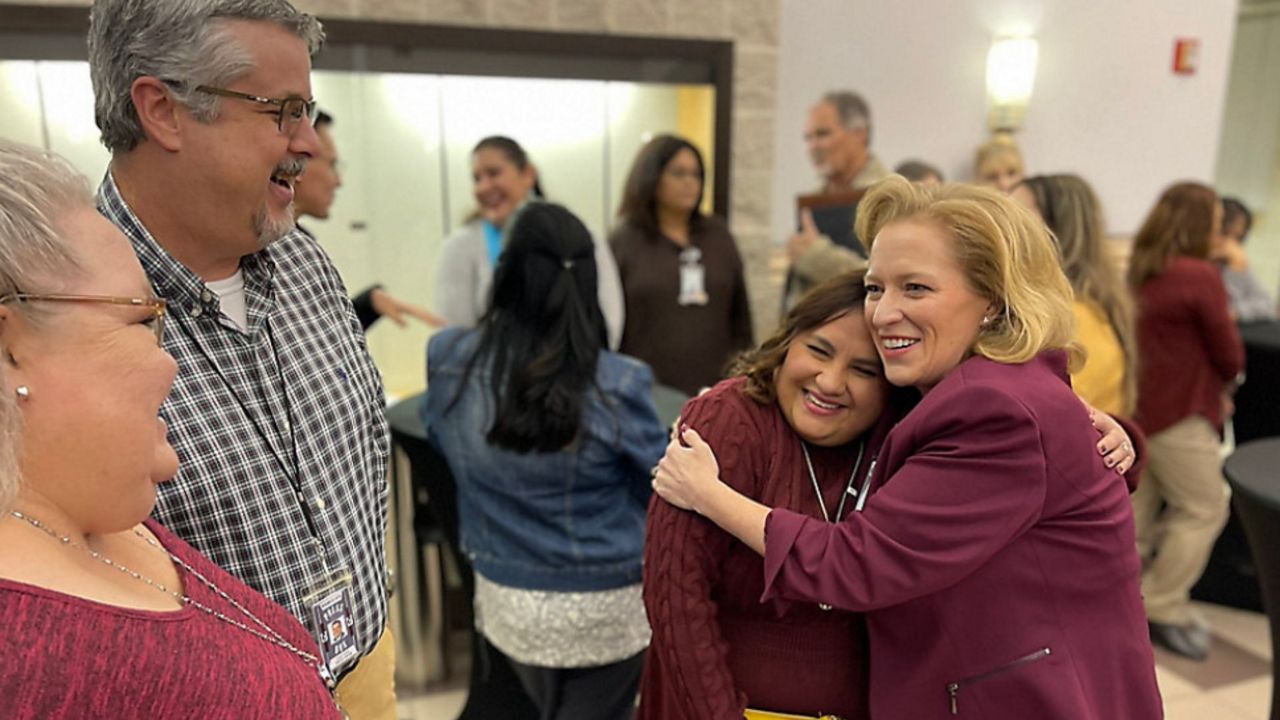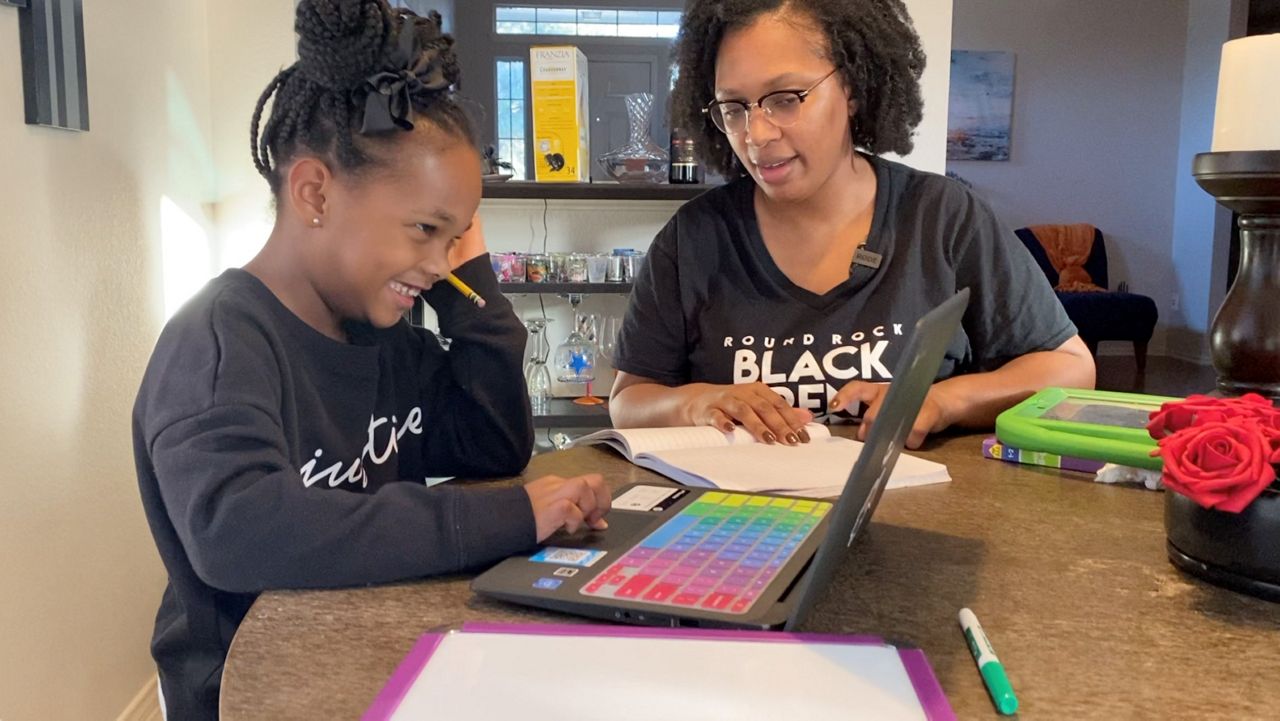SAN ANTONIO – As Adriana Abundis drove through the West Side of San Antonio, she recalled her first time being exposed to its low-income areas.
What You Need To Know
- Adriana Abundis teaches at Lanier High School
- When she started teaching, would walk to work to learn neighborhood
- Incorporated Mexican-American studies into the math class she teaches
“I remember the first time moving here to San Antonio – the first school that I observed was here Tafolla Middle School, and I remember people alluding to ‘the Courts,’ with a narrative that was very damaging,” Abundis says.
Abundis is talking about the Aalazan Courts: a cinder block housing project built in the 1940s for poor Mexican-American families on the West Side.
“But I remember looking out the windows of a math classroom and seeing this beautiful community,” Abundis says.
It’s a community similar to her own back in South East Los Angeles. Abundis was the first in her family to obtain a college degree when she graduated from Michigan State University.
She now teaches dual-language math at Lanier High School where 96 percent of students are economically disadvantage and 96 percent are also Hispanic. However, the school never offered a Mexican-American studies class until Abundis created it.
“So I created this curriculum that taught state standards in mathematics, but embedded Mexican-American studies curriculum,” she explains.
Adriana’s first language was Spanish, but the longer she was in grade school, the less she used it.
“From that moment I stopped speaking Spanish — I became a lot quieter and started trying to figure out to assimilate the best,” Abundis says.
She’s doing the opposite for her students. She’s organized multiple community murals that students create to reflect the neighborhood they reside in.
This work has earned Abundis the title of Teacher of the Year for Region 20 and was recognized as a finalist for Texas Teacher of the Year.
Abundis says her connection to the community and her students was eight years in the making. When she first arrived on the West Side, she used to intentionally leave her car at home so she could get acclimated with the neighborhood.
“And walking to school, which would be like 45-minute to an hour walk, just to intentionally get to know my block,” Abundis says.
It’s a community she’s connected with and one she doesn’t plan on leaving.
“I want to see the West Side be reclaimed and redeemed and I would only hope that people see that,” Abundis says.












